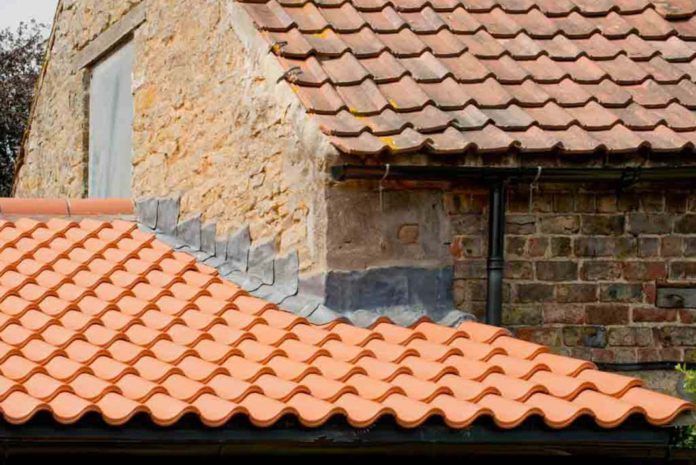When it comes to roofing, some of the most frequent online searches we see are about installing tiles at low pitches, whether that be questions about the minimum pitches for different roof tiles or slates, or queries about weatherproofing.
This corresponds with the continued growth in demand for low pitch solutions over the past few years, which is being driven by the trend for large commercial roofscapes, alongside a surge in ground floor extensions due to the relaxation in planning laws. Many homeowners prefer the aesthetic of a pitched roof over a flat one for a rear extension but need tiles that will match the main roof. Inevitably these need to perform at a lower pitch because of the position of first floor windows.
So, whereas traditionally contractors would have been installing pitched roofs above 20°, now it is increasingly likely that they will have to work on some low pitch roofing projects. Here we answer some of the most frequent technical queries about creating low pitch clay and concrete roofs:
1. What is the lowest minimum pitch for a clay roof?
When it comes to clay plain tiles, some types of single camber tile can be used on roof pitches as low as 30° (depending on the manufacturer) but most single and double camber clay plain tiles can be used down to 35° pitches.
However, there are some clay interlocking tiles which allow you to achieve the traditional clay look at a much lower pitch. For example, our Melodie clay interlocking pantiles can be used on pitches as low as 12.5°. These tiles are particularly good for extension projects where the roof may be lower than the main property but needs to blend with original pantiles.
For a more rustic appearance, our Lincoln interlocking pantile has a low minimum pitch of 17.5° and the same with our Maxima Double Roman interlocking tile.
2. What low pitch options are there for concrete roofs?
We offer three different low pitch concrete roof tiles. Our large format Wessex and Mendip concrete interlocking tiles can be used down to a minimum 15° pitch and our thin leading edge, slate effect Edgemere interlocking tile has a 17.5° minimum pitch.
3. Why can some tiles be used at a lower pitch?
The weathertightness of roof tiles and slates decreases as the roof pitch gets lower and rafter length increases because it takes longer for water to drain from the roof. The reason our tiles can achieve such a low minimum pitch is because we put them through very extreme testing processes, which go above and beyond what a normal roof tile would be exposed to. Many of them also incorporate special features which allow them to be installed at a lower pitch.
4. What happens if I need to go below the recommended minimum pitch?
It is important to remember that local building surveyors will almost always check the roof tile or slate is suitable for your pitch. Laying a product below its minimum pitch can prove to be a costly mistake, so it is always important to check what is being used and whether it is suitable.
If you do decide to install roof tiles below recommended minimum pitch for aesthetic reasons, then the tiles should not be relied upon for performance. However, there may be proprietary sub-roof systems on the market by others to install beneath the tiles to provide this necessary function. In these instances, checking exposure is very important because the higher the rainfall, then the riskier this approach is. Our advice follows the BS 5534 recommendation that ‘a roof designed below the recommended roof pitch should have a functional weatherproof sub-roof system to remove any rainwater ingress safely to the rain gutter.’
5. What other tips do you have for installing low pitch roofs?
– Give careful consideration to how the whole roof system will perform at a low pitch and check compatibility. All of our low pitch options have matching fittings and accessories for ease of installation and additional protection
– A low pitch roof on an extension may have to deal with an increased amount of water coming from a larger roof above, so it needs to be designed carefully with consideration given to where the water run-off will be
– On adjacent roof slopes of varying pitch, set batten gauge to the lower roof pitch to ensure alignment at intersections
– Another area to watch out for with low pitch roofs is ventilation. Normal contour vents can usually only be used down to a pitch of 20, so tile vents are not always suitable for low pitch installation. Instead a dry fix eaves vent system can be used
– Nail holes in cloak verge half tiles should be sealed with mastic, when used on roof pitches below 25° and should be clip fixed where required
– For pitches below 35°, or valley lengths exceeding five metres, valley width may require increasing to cope with the additional flow experienced during storm conditions
– Ensure the correct minimum headlap is used for the particular tile, pitch and rafter length combination. If there is any doubt or if the rafter length is in excess of six metres users should contact Marley Eternit’s free Technical Advisory Service for further guidance.




